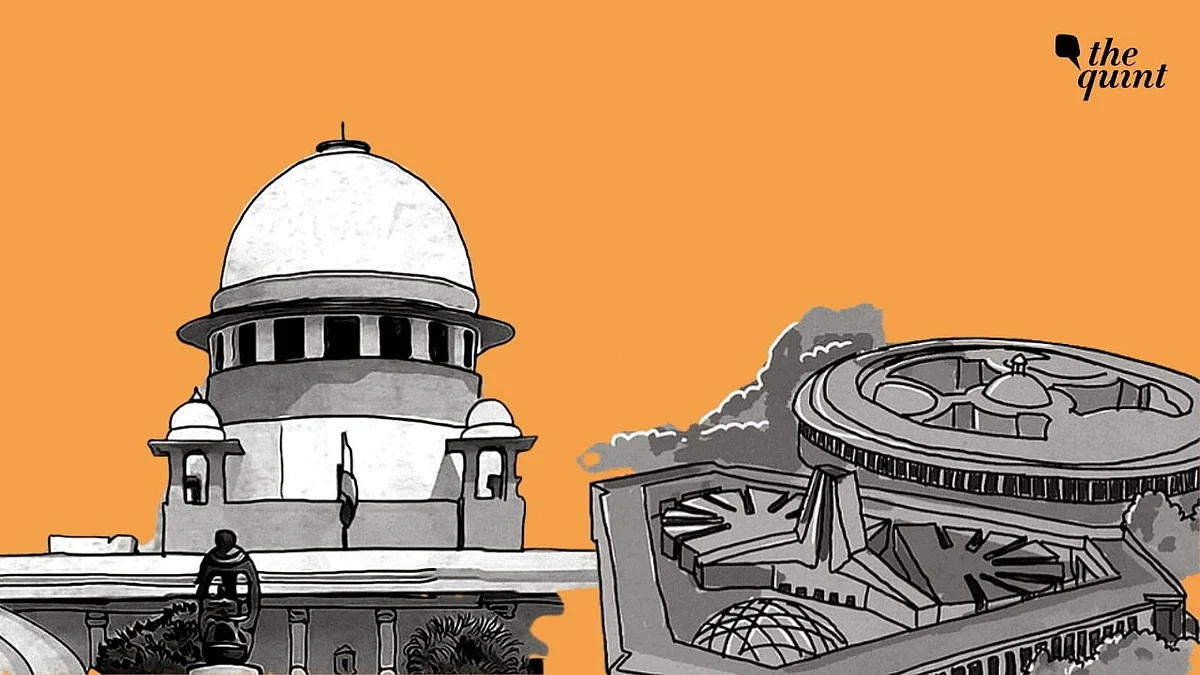
India’s Parliament Will Get a Makeover: Can Delhi Bear Its Costs?
Central Vista plan’s extreme centralisation will add an unbearable load on the already strained services of Delhi.

advertisement
The Supreme Court has placed its seal of approval on the ‘Redevelopment Plan’ of the Central Vista. It is a split decision of the three-member bench. Justice A M Khanwilkar, who pronounced the judgment on his and Justice Dinesh Maheshwari’s behalf, upheld the grant of approval by the Central Vista Committee and the Heritage Conservation Committee. The majority judgement also upheld the environment clearance by the Ministry of Environment as just, valid, and proper.
Justice Sanjeev Khanna, in a separate judgment, is reported to have held that there was no prior approval of Heritage Conservation Committee. He, however, reportedly agreed on the award of the project and the order of the Urban (Arts) Commission.
The net result is that, apparently, even the differing judgement has not found any infirmity with the government order to award the project. Hence, the fate of the Central Vista is now sealed.
Delhi Set to Lose Its Cultural & Educational Heart
The learned judges have affixed their seal of approval on a range of decisions that are questionable to say the least. The Central Vista Project, in my humble opinion, is in utter and absolute violation of laws that govern land use, height of buildings in the Lutyens Bungalow Zone, Floor Area Ratio (more than 50% above the permissible limits); Environmental Laws governing cutting or relocating of trees; Heritage Conservation Laws; and rules framed by the Urban Arts Commission to govern the aesthetics of the built environment.
Many other details are also missing from the material that has been supplied and still the DUAC has given its approval, in violation of all the rules that it has itself framed.
According to the Delhi Master Plan 1962, the Central Vista is a heritage zone and an “important site to meet the aspirations of a rich culture”. One hundred acres of land—including land on either side of the Rajpath between Rafi Marg and India-gate and all the land enclosed by C hexagon—was earmarked for public use for educational and recreational activities. That is why the National Museum, the NGMA, the IGNCA, the National Archives, the National Stadium and the Children’s Park were located in this area. All but the last two are going to be removed.
Sneaky Manner of Dislocating Delhi’s Trees
Making this part of the city a cultural and intellectual hub was part of the original plan by Edwin Lutyens and that is why the National Archives was located in its present building as early as 1926. These 100 acres have now been taken away from the people in violation of the Master Plan.
Instead of going in for an environmental assessment report for the entire central vista project—in a sleight of hand operation—the plot for the proposed new parliament was hacked off from the total land being appropriated. Environmental clearance was sought and obtained only for this plot.
The Central Public Works Department obtained the Urban Arts Commission’s sanction for the new parliament building without first approaching the Heritage Conservation Committee and the NDMC for permission.
Digging for the foundation and uprooting of scores of tree and their transplantation 22 kilometres from the site of uprooting, in a blatant violation of environment protection practices, was resorted to without informing the Department of Forests of the Delhi Government. The Supreme Court allowed the laying of the foundation of the new parliament building despite all this.
Can Delhi Afford This Extreme Centralisation?
The foundation of the new parliament should ideally have been have been laid by the first citizen and head of the State, that is the President of India and not by the Prime Minister—the executive head. The Supreme Court has not commented on the undue haste with which the entire project has been steam-rolled to meet an unrealistic deadline for building the new parliament within a short period of barely two and a half years to be ready by 15th august 2022.
The Supreme Court has not taken cognisance of this extreme centralisation of all government work, which is the antithesis of democratic decentralisation, a tendency that the Supreme Court has commented upon on several occasions in the past.
It will add phenomenally to air pollution when tens of thousands of employees head home simultaneously. These are issues that the Supreme-Court has not considered while giving a go ahead to the project.
Why Build Anew when Existing Structures Work Fine?
The Supreme Court has also not said a word on the colossal waste of resources in building new offices for all the ministries aside from the new residences for the Vice President and the PM on 15-acre plots and a four-story building for the security apparatus on another plot of 2.5 acres. This is happening at a time when all these facilities exist and none of the buildings presently occupied by the incumbents and their security details are under any threat of immediate collapse.
Instead of affixing their seal of approval, shouldn’t the Supreme Court have asked the government to go back and return with a proposal that has been prepared after following all the rules and laws that have been framed by the Parliament of world’s largest democracy?
(Sohail Hashmi is a writer-filmmaker, who identifies himself as a history buff and heritage enthusiast. He has been conducting heritage walks in Delhi for over 16 years. He is one of the founding trustees of SAHMAT—The Safdar Hashmi Memorial Trust. He tweets at @dilliwal. This is an opinion piece and the views expressed are the author’s own. The Quint neither endorses nor is responsible for them.)
- Access to all paywalled content on site
- Ad-free experience across The Quint
- Early previews of our Special Projects
Published: 06 Jan 2021,09:08 AM IST